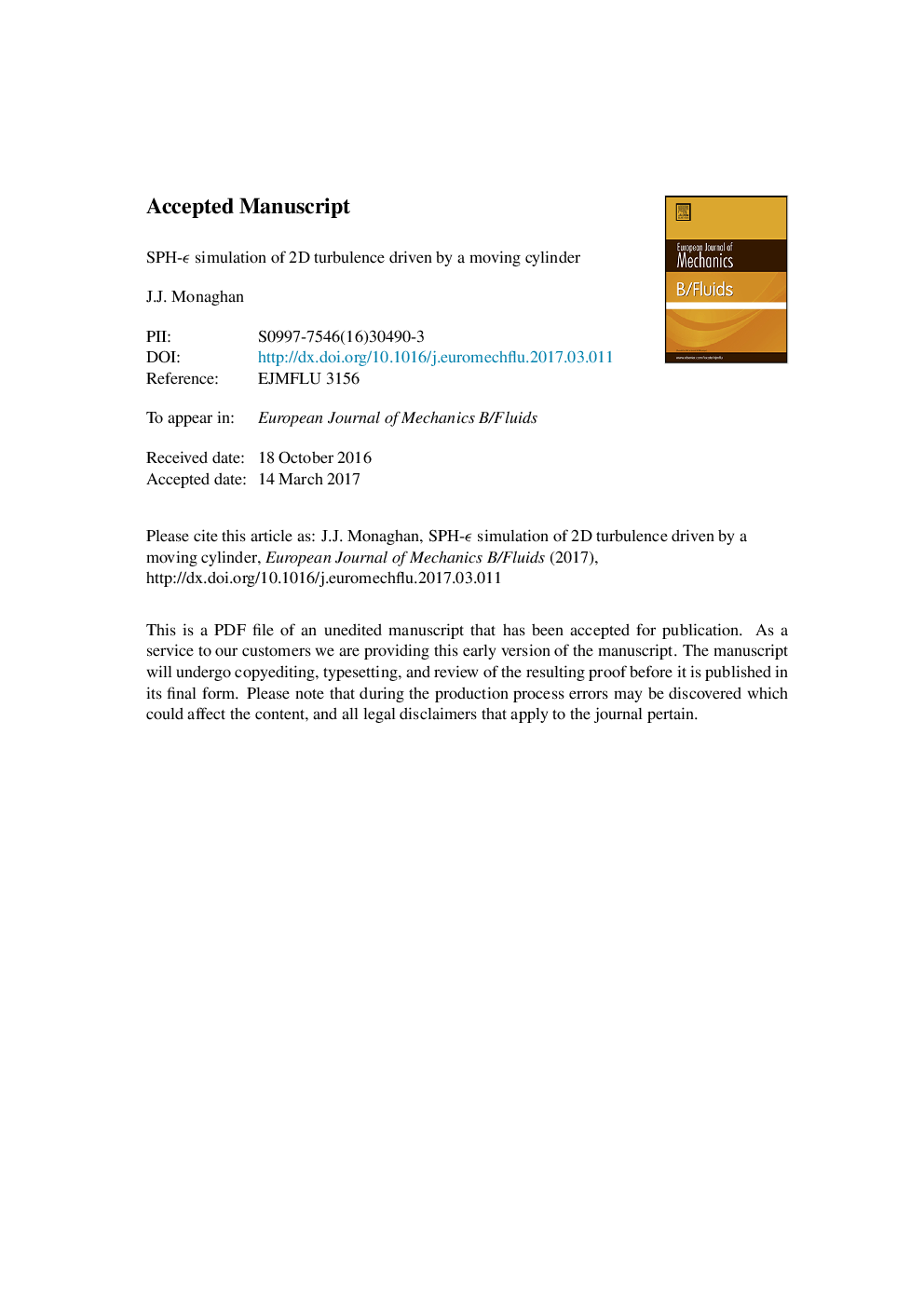| Article ID | Journal | Published Year | Pages | File Type |
|---|---|---|---|---|
| 4992297 | European Journal of Mechanics - B/Fluids | 2017 | 24 Pages |
Abstract
The aim of this paper is to describe how effectively a turbulence model for the particle method SPH (Monaghan 2011 denoted by SPH-ϵ) simulates 2D turbulence driven by a moving cylinder inside a square box with no-slip walls. The model makes few assumptions, conserves linear and angular momentum, satisfies a discrete version of Kelvin's circulation theorem and is computationally efficient. Furthermore, the results from the model for decaying two dimensional turbulence are in good agreement with the experimental and computational results. The SPH turbulence model is based on a Lagrangian similar to that used for the Lagrangian averaged Navier-Stokes (LANS) turbulence model, but with a different smoothed velocity. The smoothed velocity preserves the shape of the spectrum of the unsmoothed velocity for short length scales, but reduces its magnitude by an amount which depends on a parameter ϵ, where 0â¤Ïµâ¤1. When ϵ=0, there is no smoothing, and when ϵ=1 the smoothing is a maximum. We compare calculations with resolution given by the Reynolds length âR and those using SPH-ϵ with ϵ=0.8, and a coarser resolution 2âR. The second and fourth order velocity correlation functions, the energy spectrum and the mixing calculated using SPH-ϵ and the coarse resolution 2âR, are in good agreement with those using the resolution âR, but requires 8 times less work to integrate to the same time. The mixing induced by the turbulence is in good agreement with high resolution calculations.
Related Topics
Physical Sciences and Engineering
Chemical Engineering
Fluid Flow and Transfer Processes
Authors
J.J. Monaghan,
